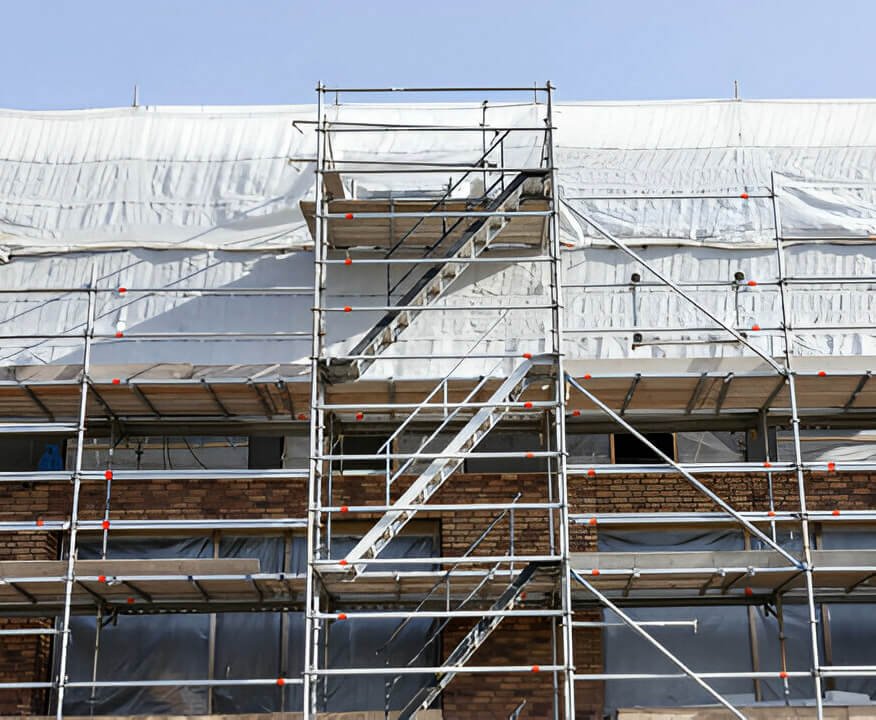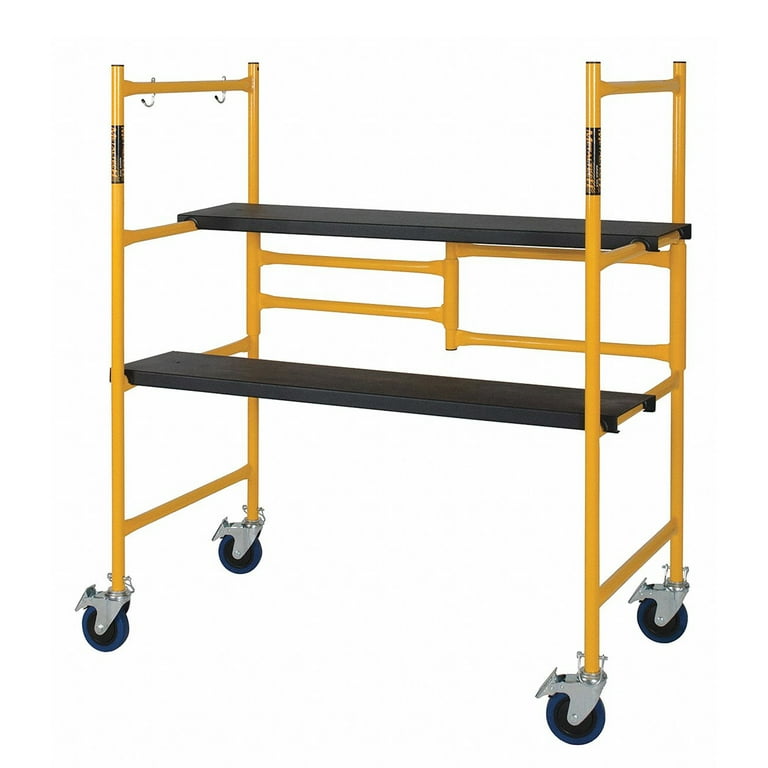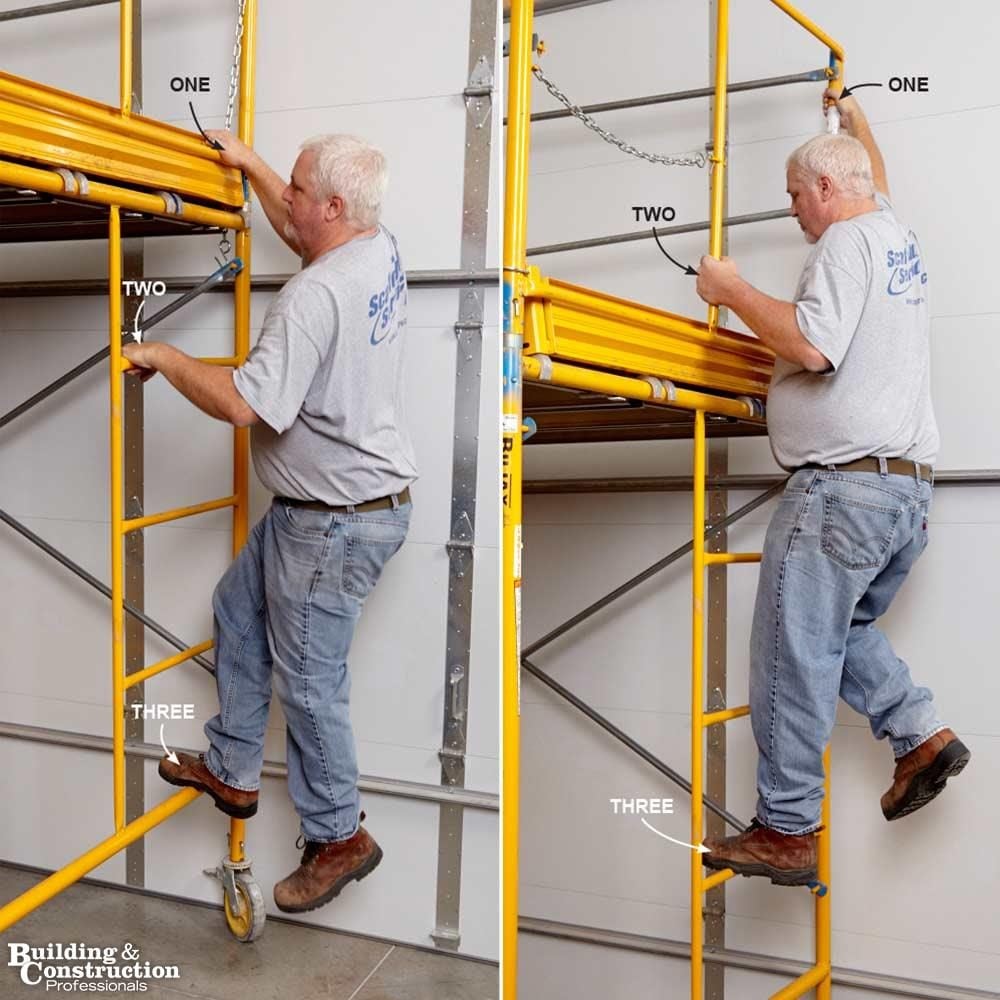Temporary Roof Scaffolding for Your Construction or Renovation Project
Temporary Roof Scaffolding for Your Construction or Renovation Project
Blog Article
Exploring the Numerous Kinds of Scaffolding Used in Building And Construction Tasks
The building industry depends greatly on numerous sorts of scaffolding to meet certain project needs, each offering unique benefits and applications. Standard framework scaffolding gives a strong foundation for basic jobs, while suspended scaffolding is vital for service high-rise structures. Other alternatives, such as system and rolling scaffolding, deal with efficiency and mobility, specifically. Furthermore, the cantilever alternative proves very useful in city environments where area is constricted. Understanding the nuances of these scaffolding types is essential for enhancing safety and security and efficiency on building websites, motivating a closer assessment of their unique attributes and applications.

Typical Structure Scaffolding
Conventional framework scaffolding is among the most extensively used techniques in the building industry as a result of its robustness and versatility. This system consists of upright and horizontal structures that are put together to create a secure system for products and employees. The primary components consist of vertical messages, horizontal ledgers, and angled dental braces, which together give a solid framework that can sustain considerable lots.
Among the crucial advantages of standard structure scaffolding is its adaptability to numerous building and construction tasks, varying from residential buildings to large industrial frameworks. The modular layout allows for easy setting up and disassembly, making it efficient for both long-term and short-term jobs. Furthermore, the system can be tailored in elevation and size, fitting various structure styles and site problems.
Safety is vital in scaffolding applications, and traditional frame systems are geared up with guardrails and toe boards to stop drops and make certain employee defense. Routine evaluations and adherence to safety regulations are crucial in maintaining the honesty of the scaffold (Scaffolding). In general, standard framework scaffolding stays a fundamental choice in the construction sector, offering a reputable system for labor and boosting total job efficiency

Suspended Scaffolding
Put on hold scaffolding provides a special service for building and construction jobs that require access to raised surfaces, specifically in situations where standard frame scaffolding may be not practical. This sort of scaffolding is commonly suspended from the roof covering or top degrees of a framework, using a system of systems, ropes, and pulley-blocks to produce a functioning area that can be adapted to different heights.
Among the main benefits of suspended scaffolding is its flexibility. It can be quickly rearranged or decreased to fit modifications in construction requirements, making it ideal for tasks such as window setup, frontage job, and upkeep on skyscrapers. Additionally, the very little impact of put on hold scaffolding permits for far better use of ground space in urban environments, where room is commonly minimal.
Safety and security is a crucial factor to consider in using put on hold scaffolding. Appropriate rigging and anchoring systems have to be employed to ensure stability and prevent mishaps. Operators needs to likewise be educated in the risk-free use of this devices. In general, suspended scaffolding provides a effective and reliable solution for accessing hard-to-reach locations in different building and construction situations, improving both efficiency and security on website.
System Scaffolding
System scaffolding, frequently considered a modern-day service in the scaffolding industry, contains pre-engineered elements that can be quickly constructed and adapted for various construction tasks. Scaffolding. This kind of scaffolding is identified by its modular layout, which enables convenience and effectiveness on work sites, accommodating different elevations and architectural requirements
Commonly made from high-strength steel or aluminum, system scaffolding offers improved durability and security. The parts include vertical articles, horizontal journals, and angled braces, which interconnect firmly, guaranteeing a robust structure. The style typically integrates standardized fittings, simplifying assembly and disassembly procedures, thereby reducing labor time and expenses.

Rolling Scaffolding
Rolling scaffolding is a versatile choice to traditional set scaffolding, developed for wheelchair and ease of usage on building websites. This kind of scaffolding contains a system supported by structures with wheels, enabling workers to conveniently move it as required. The wheelchair function considerably boosts efficiency, as it decreases downtime linked with taking apart and assembling taken care of scaffolding.
Commonly built from light-weight materials such as aluminum or steel, rolling scaffolding provides a tough yet portable option for projects needing frequent repositioning - Scaffolding. It is specifically advantageous in tasks such as paint, drywall setup, and electrical work, where accessibility to numerous elevations and locations is needed
Security is critical in rolling scaffolding layout, with features such as locking wheels to avoid unintentional movement when in use, and guardrails to shield workers from falls. Furthermore, lots of versions are flexible in elevation, accommodating different job requirements.
Cantilever Scaffolding

The design of cantilever scaffolding generally entails making use of arms or brackets secured to a building or framework, making it possible for the system to extend exterior safely. Safety and security is vital; therefore, these scaffolds must be crafted to withstand different tons and ecological conditions. Regular examination and maintenance are vital to ensure architectural integrity and worker safety and security.
Cantilever scaffolding is preferred for its adaptability and reliable use area, making it a popular option in urban atmospheres where room constraints are typical. In addition, it assists in less complicated access to high elevations, inevitably adding to the total performance of building and construction projects. Similar to all scaffolding kinds, proper training and adherence to security check it out requirements are essential for workers making use of cantilever scaffolding.
Final Thought
To conclude, the varied kinds of scaffolding made use of in building and construction projects each serve distinct purposes customized to specific site requirements. Conventional framework scaffolding supplies security, while suspended scaffolding uses flexibility for elevated tasks. System scaffolding facilitates quick setting up, and rolling scaffolding enhances wheelchair for differing workplace. Cantilever scaffolding effectively resolves obstacles in urban setups. Understanding these scaffolding kinds is important for optimizing security and performance in construction, inevitably adding to the effective completion of projects.
Traditional structure scaffolding offers a sturdy structure for basic tasks, while put on hold scaffolding is necessary for work on skyscraper structures.Rolling scaffolding is a flexible alternative to standard fixed scaffolding, designed for flexibility and simplicity of usage on building sites. As with all scaffolding kinds, proper training and adherence to safety and security requirements are vital for employees utilizing cantilever scaffolding.
Conventional frame scaffolding supplies security, while suspended scaffolding uses flexibility for elevated tasks. System scaffolding facilitates quick setting up, and rolling scaffolding enhances flexibility for varying go to this site job environments.
Report this page